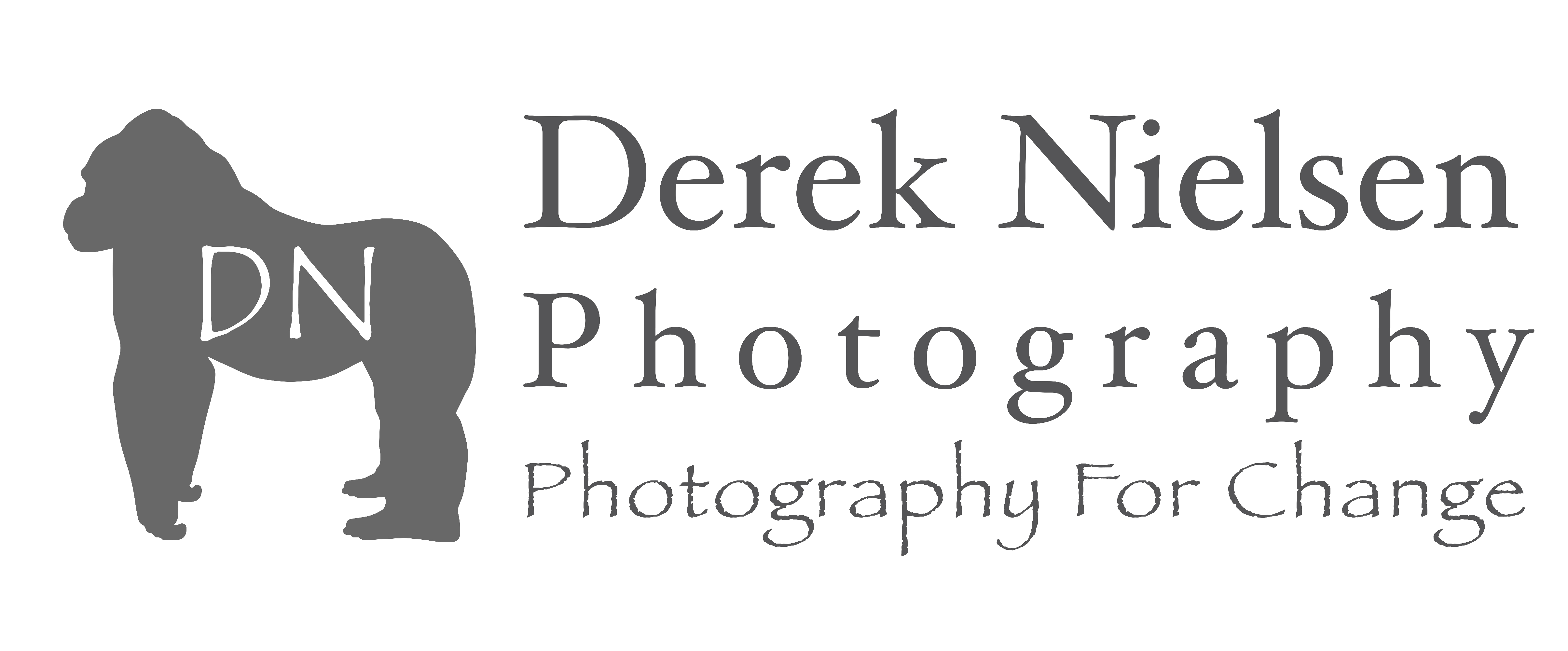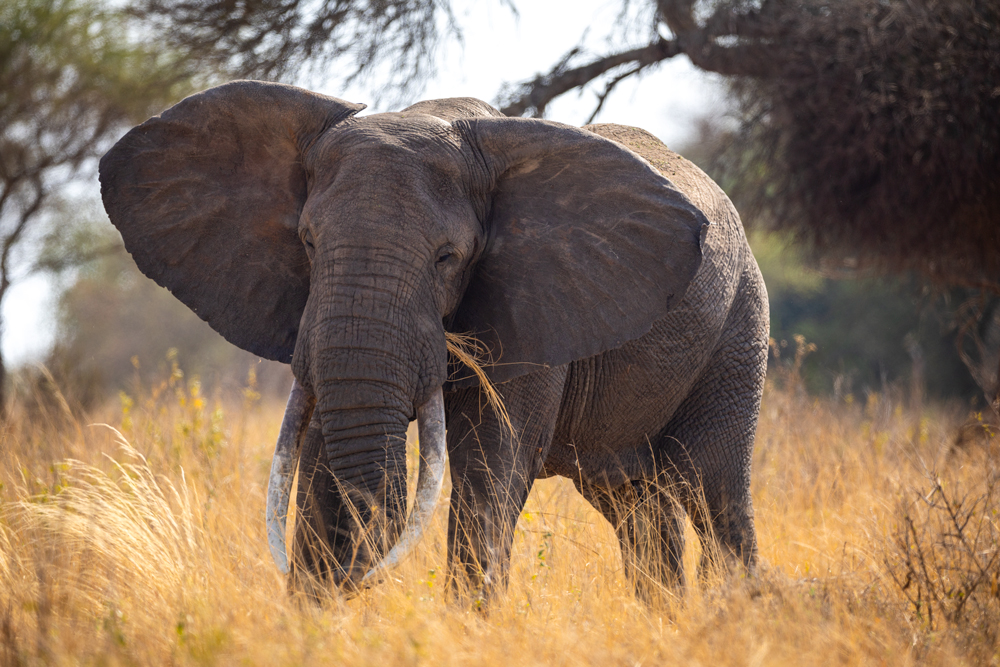
Getting the opportunity to practice elephant photography on safari is one of the most unique and beautiful experiences a wildlife photographer could dream of. Quietly composing image after image. Watching the world’s largest land animal interact with its family and listening to the gentle rumble of their communication, staying with the family until the perfect soft light dances on their skin. All of this makes photographing elephants so unique. Follow these important tips below to help maximize your potential for leaving your safari with breathtaking images.
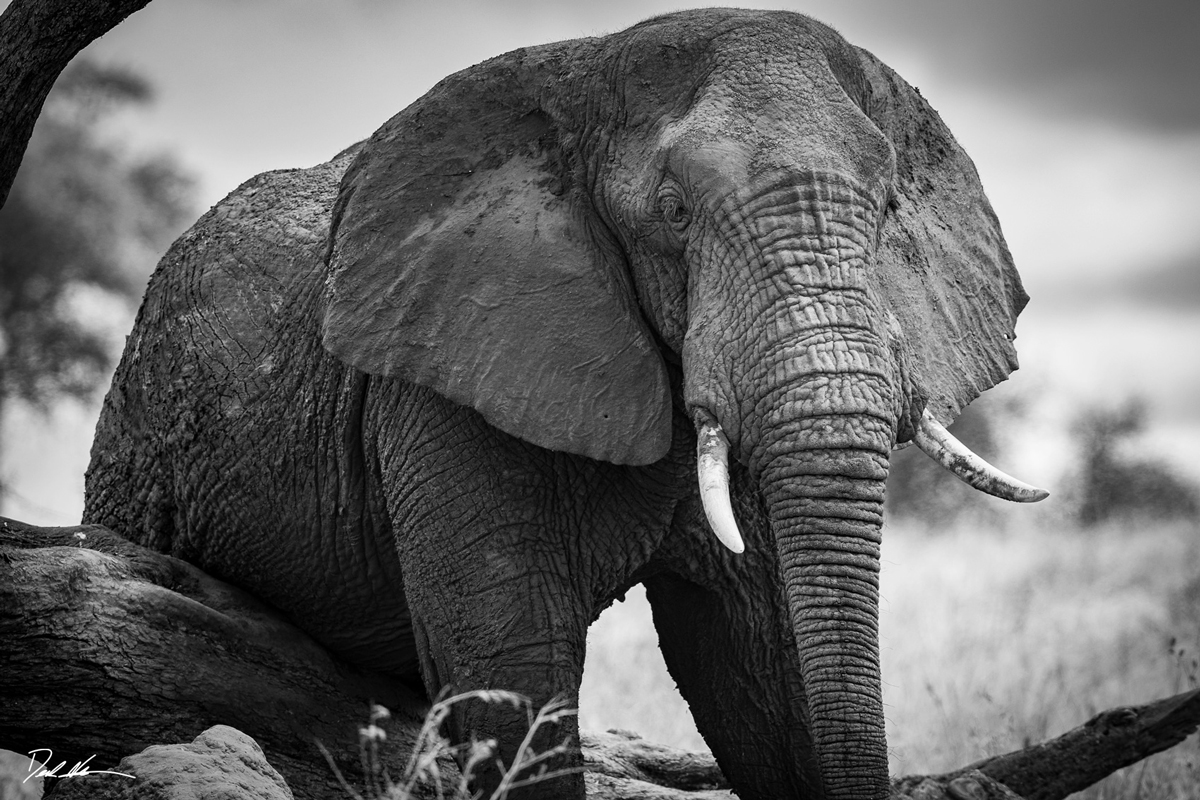
(Limited Edition Fine Art Print of 10 – “Power” – Derek Nielsen Photography)
1. Photograph Elephants From A Low Angle.
Elephants are enormous, so let their size stand out in your photographs. Open the door in your safari jeep when the opportunity allows and shoot lying on the floor. Bring a tripod or prop your camera against something to get a ground view. This is the best option if you can safely set up low on a walking safari. Some of my favorite photographs other photographers have taken are done using a remote with the tripod away from the jeep. If you are lucky, the curious animal will investigate your setup while you capture a few images. Only practice that technique where allowed. Be prepared to have your camera destroyed if it gets stepped on—risk vs. reward.
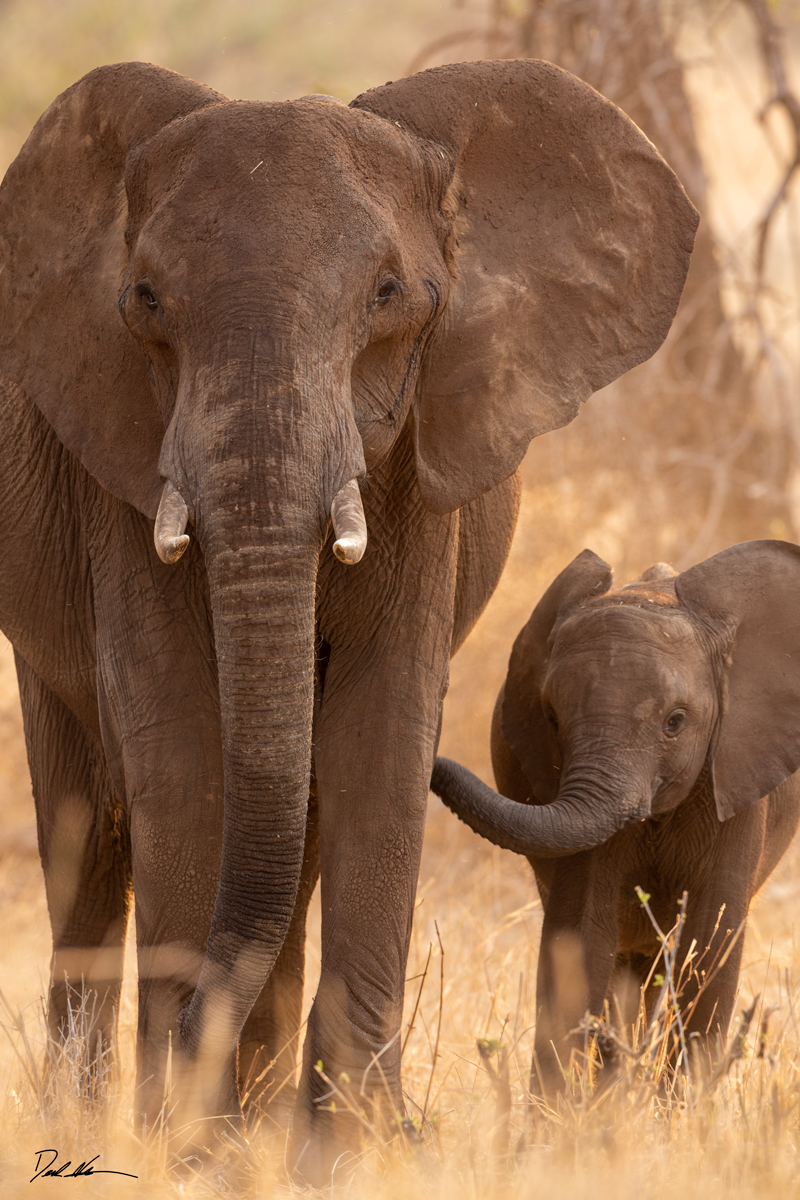
(Limited Edition Fine Art Print Of 6 – “Mom and Me” – Derek Nielsen Photography)
2. Show The Delicate Social Structures.
Of all the species in the world, elephants have some of the tightest family dynamics. Elephants are highly intelligent animals. Females often spend their entire long lives together, spearheaded by the matriarch. Groups can have several mothers to very dependent offspring. These offspring deeply love their family. This love is apparent after just spending a few moments with them. Show the affection. The love. The tenderness.
This bond is one trait that makes elephants so beautiful and why elephant photography is so fun. Capture the juveniles playing or wrestling in the mud. Elephant babies are endlessly cute. Highlight their uncoordinated understanding of how gravity works. Make people fall in love with this highly emotional animal. Some of my photographs of this dynamic have been my audience’s favorite.
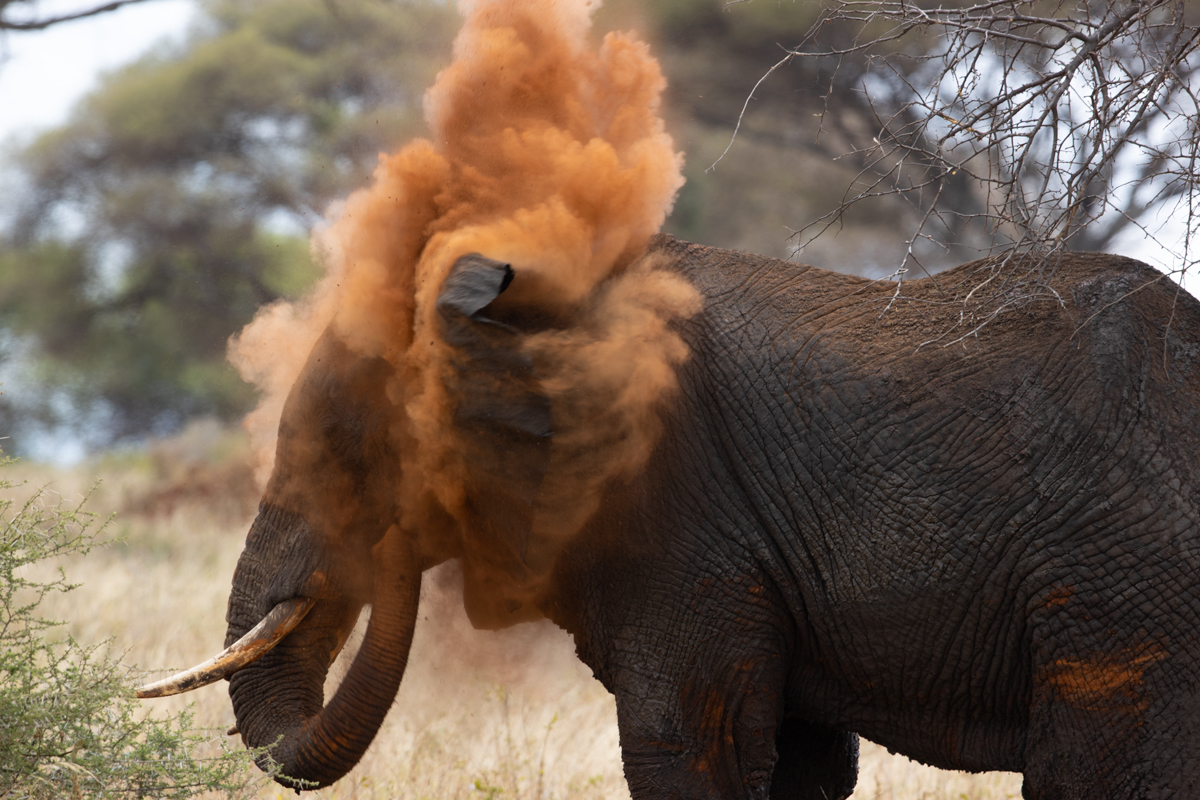
3. Emphasize Their Behavior.
Elephant photography is compelling when the photographer can capture them in action. I have seen a single bull elephant push over a full-grown tree to get a better angle to scratch his itch. Elephants practice false charges to let viewers know who is in charge. Their ears go out, heads go up, and they kick dust to show they mean business. This is a golden opportunity to catch a unique image of an elephant showing off one of its most powerful body postures. (Always ensure you are with a trained guide knowledgeable about elephant behavior. An actual charge can be deadly.)
4. Isolate The Trunk.
One of the features we all know elephants for is their trunks. In the dry season, elephants draw in dust, spraying it all over their bodies to help protect them from heat and parasites. Capturing the expulsion of this dust creates wildly interesting images. Around water, even in the dry season, this trunk becomes a water cannon for playtime, keeping cool, and, of course, drinking. Use these moments to create action shots, freezing the water mid-flight. For getting sharp images, I recommend a shutter speed of 1/2000 second. Overall, they move pretty slowly, but when the action happens, a fast shutter speed will enhance your elephant photography, ensuring you won’t miss a moment.
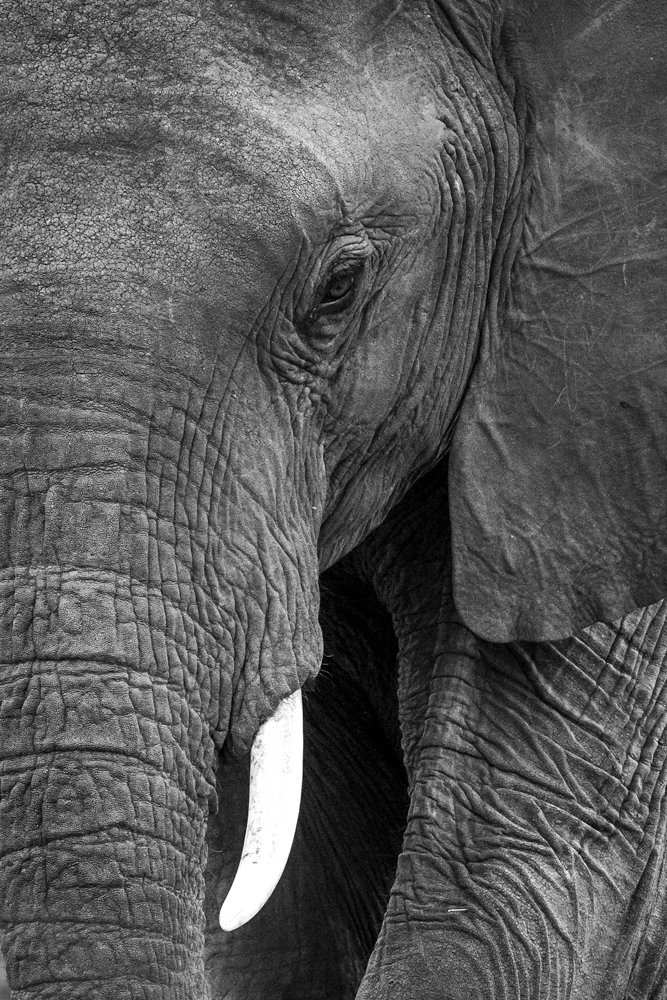
(Limited Edition Fine Art Print Of 6 – “Beholder” – Derek Nielsen Photography)
5. THINK ABSTRACT
Dialing in on iconic segments of elephants while not getting the whole animal in the frame produces gorgeous abstract elephant photography. Something about using parts of the tusks, trunk, ears, or skin with harsh light highlighting the features connects with audiences. Abstract wildlife photography allows the viewer to understand what they are looking at but still allows the imagination to fill in the rest.
Take a picture of a whole elephant. The viewer may see it, say, “Yep, that’s an elephant,” and move on. Take an abstract picture of the same elephant but use only a portion of it, or maybe bring in the surrounding elements to paint a picture without giving it all away. See what you like better.
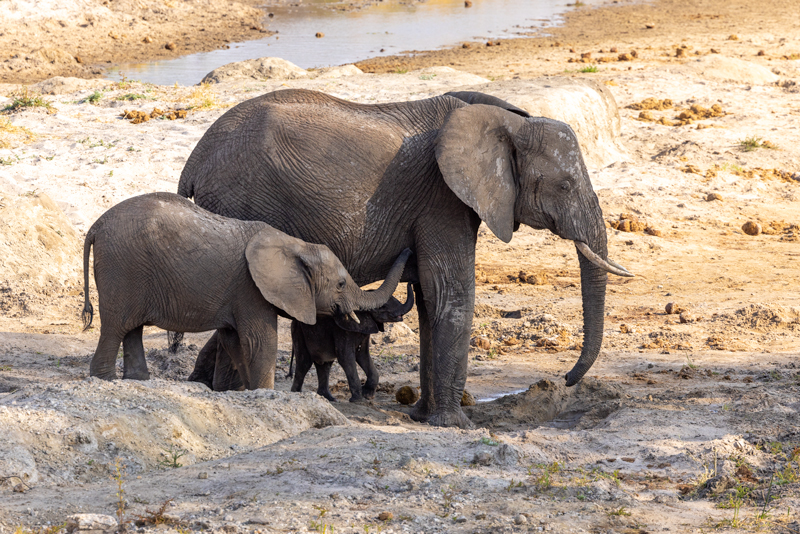
6. SPEND TIME WITH THEM
Too often, while out on safari, I see jeeps approaching wild elephants, snapping a few photos, then driving off to the next attraction. Half of the magic of elephant photography is getting to spend time with these incredible animals. Let them touch your soul.
On my last trip to Tarangire National Park, I had the unique opportunity to photograph a small family of elephants in a dried river bed. A mother, her juvenile, and a newborn baby. The rest of the family was down the river, but I had only fifteen minutes to watch the mother teach the juvenile how to dig for water beneath the dried surface. Once she drew up enough water for herself, she let out a long grumble, and the baby came over to start nursing.
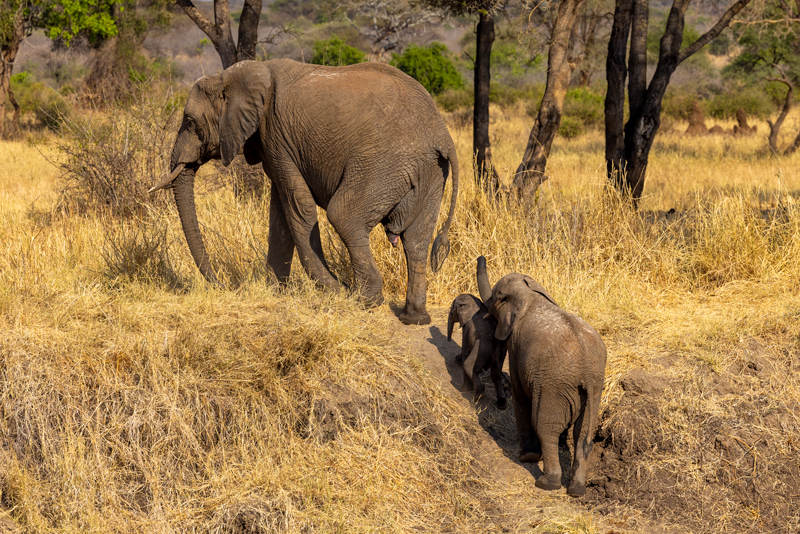
(Images taken in Tarangire National Park, Tanzania)
Moments after the baby came over, the juvenile wanted some of their mother’s milk, and she was not having it. Mom let out a loud trumpet to scold the older child. In retaliation, the youngster knocked over the newborn, who then let out its own pathetic sound. The entire interaction was so reminiscent of watching human family dynamics with children.
Allow the story to unfold. I have since told this story many times in presentations or simply sharing my encounter with friends. Getting a nice picture is part of what we do as photographers and travelers. Spend time with them long enough to tell a story. Tell their story. Make people fall in love with them as we have.
The best part of my encounter watching the small elephant family quarrel was in the end, and the juvenile stepped up when needed and helped push the baby up the opposite river bank. It showed that no matter how jealous it was of its baby brother or sister, it already knew how important family was.
(Image taken with Canon R3 with RF600mm f/4 IS USM) (Limited Edition Fine Art Print Of 6 – “Glowing Serengeti” – Derek Nielsen Photography)
7. Take A Photograph Of An Elephant As A Silhouette.
Elephants are wild animals most people can recognize without ever seeing them in nature. Their distinct features make them stand out. As the sun is rising or setting, place the elephant between you and the sun. This technique will give a glowing background with a dramatically underexposed elephant shape, making a silhouette.
8. Capture Elephants In Their Natural Habitat.
All too often, when we arrive at an elephant herd, we take pictures of only the elephants. Try incorporating the surrounding elements. This photography technique is called “environmental portraiture”. Use the grasslands or even a favorite scratching surface to tell a story.
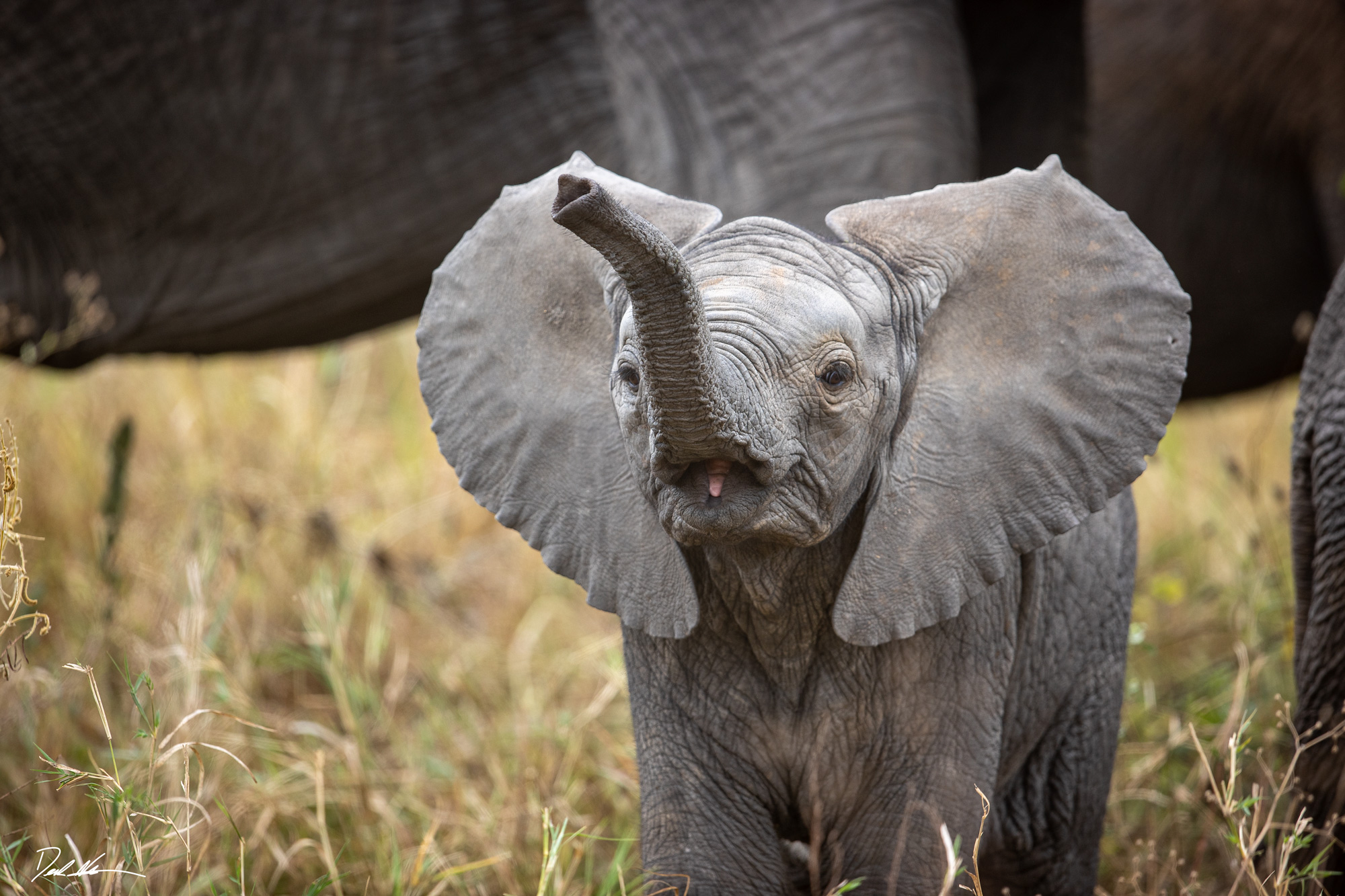
(Trumpeter – Fine Art Print of 10 – Derek Nielsen Photography)
9. The Baby Elephant Steals Hearts
Baby animals, in general, make great wall art for nurseries. Baby elephants are some of the cutest animals on the planet. So often, they are clumsy and usually are looking to play. When coming upon a big elephant herd, there is a good chance you will have a few baby elephants trying to keep up with their bigger relatives. Capture their big personalities in these still-small bodies. Be prepared for a good laugh.
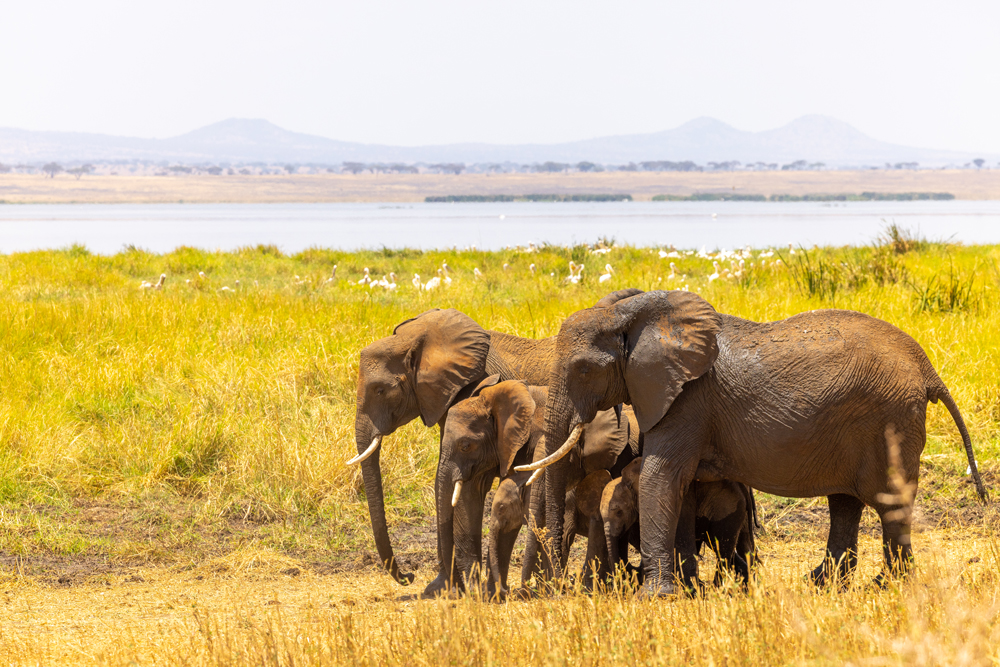
10. Incorporate The Entire Herd Into One Photograph
Elephant herds are fascinating to watch. When you get a large wall of the largest land animal on earth lined up, it can make a powerful photograph. Large groups mostly comprise older female elephants, as males tend to wander alone until it is time to mate. As you can see in the photograph above, the various sizes of each family member clearly stand out.
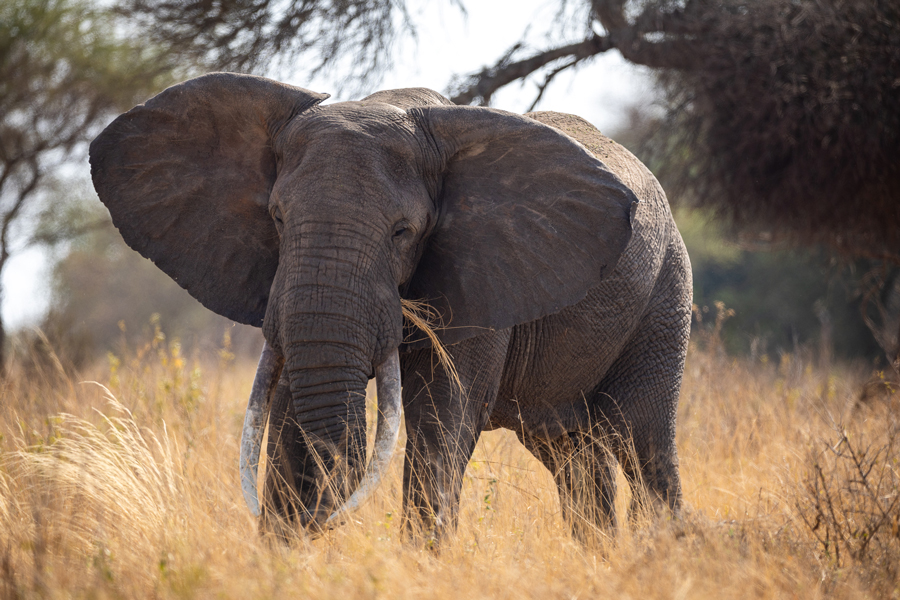
11. Wait For The Perfect Shot
Unless provoked or spooked, elephants move relatively slowly. Their direction of motion is also predictable. They move in the direction of food, water, or shade. That being said, getting great elephant pictures can require a little planning. Position your safari vehicle ahead of where they are traveling but not directly in their path. We are observers in their world. Never have animals change their behavior just to get a good shot. However, if you safely position your vehicle in their direction, the herd will move past you on their terms. This keeps them calm and gives you outstanding images.
12. The Best Camera For Elephant Photography
Jokingly, the one you know how to use. But, seriously, there is a lot of truth to that. Today, cameras are becoming more and more advanced. Spend time before your safari practicing on your pets, children, or friends. Visit a local zoo. Practicing photography on similar subjects before you go on your expensive vacation will save you a lot of heartbreak down the road. There is nothing worse than returning home after some incredible wildlife encounters only to learn your images are all just a bit blurry. Reading articles on nature photography also gives you tips on professional tricks you may have never heard of. I use the Canon R5 and R3. Both cameras have incredibly fast autofocus and animal detection abilities to keep my main subject focused. Bring a backup body regardless of what brand you prefer. Camera stores are few and far between.
13. Best Camera lens For Photographing Elephants
Lens preference is very personal when creating fine art images. So much depends on what message you are trying to deliver or the final feel of the image you are trying to convey. My go-to lens selection on safari in Tanzania are:
- RF15-35mm F2.8 L IS USM – This landscape-style lens is perfect for capturing elephants in their natural habitat. Having a wide-angle lens allows for some very powerful low-angle images taken with a shutter release.
- RF24-105mm F4 L IS USM – Still in the wide-angle family, this lens allows for a little more reach when taking environmental portraits of elephants. This is my go-to everyday lens and is on my backup body at all times.
- Canon RF 70-200mm f/2.8L IS USM – This is one of my all-time favorite lenses. I have one with me on almost every trip I take. It is razor-sharp and covers a good focal range. This is a great lens for low light when the animals are most active.
- Canon RF 600mm f/4 L IS USM Lens – One of the best but most expensive lenses you can ever shoot wildlife with. Fast, sharp, and surprisingly lightweight. This is my go-to lens when photographing details in animals or when working with potentially dangerous animals from a distance.
14. Choose The Right Safari Company
Safari travel is expensive. You don’t have to choose a top-of-the-line safari company to have an unforgettable trip. But you want to have an unforgettable trip for a good reason, not a bad one. Do your homework. Look up reviews on Trip Advisor. Call travel agents. Ask questions to people who have been there. A good safari company has a skilled driver/guide, newer/well-serviced vehicles, and puts the animal’s wellbeing over showing their guest close encounters. Safety is number one while out in the bush. Reckless behavior puts the entire industry in jeopardy. Seek someone with experience.
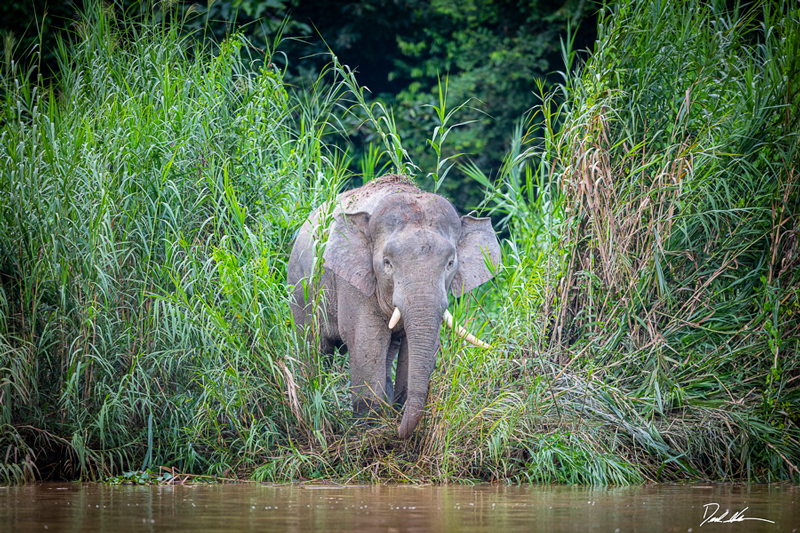
(Giant Crossing – Limited Edition Fine Art Print of 100 – Derek Nielsen Photography)
15. Finding And Photographing The Asian Elephant
Unlike African elephants, Asian elephants live mainly in the jungle. This makes this animal much harder to find. Due to clashes with humans and rapid habitat loss, Asian elephants are more shy than African elephants. Patience is key.
The best way to find the Asian Elephant is to travel by boat along the river systems. These massive animals need to drink a lot of water each day. If possible, have your guide travel without using a gas motor. Gas motors may cause them to step away from the river until you are gone. A massive animal can disappear just a few feet from the river bank in the tall grasses.
ELEPHANT PHOTOGRAPHY SAVES LIVES
Your primary mission for going on safari to photograph wildlife, including elephants, may not be to raise awareness for conservation, but…every photo or story shared may help save an elephant’s life. The more we get people curious about what it would be like to be there, the greater chance they have to visit. The more people visit, the more money gets put into the local economy, the national parks, and the people who help protect these living giants.
Elephant photography is more than just taking pictures of animals. It’s an opportunity to connect with the single largest land animal on the planet in its home. For more information on how to get great images of nature, visit my detailed blog on the topic. If you are curious about the photos in this article, visit my gallery for more information. 15% of all my African wildlife photography sales go to The Gabby Wild Foundation to help protect African wildlife. Thank you for taking the time to join me. Together we can give elephants a fighting chance.
WHAT IS THE COST OF NOT PURSUING YOUR DREAM AND BECOMING A GREAT PHOTOGRAPHER?
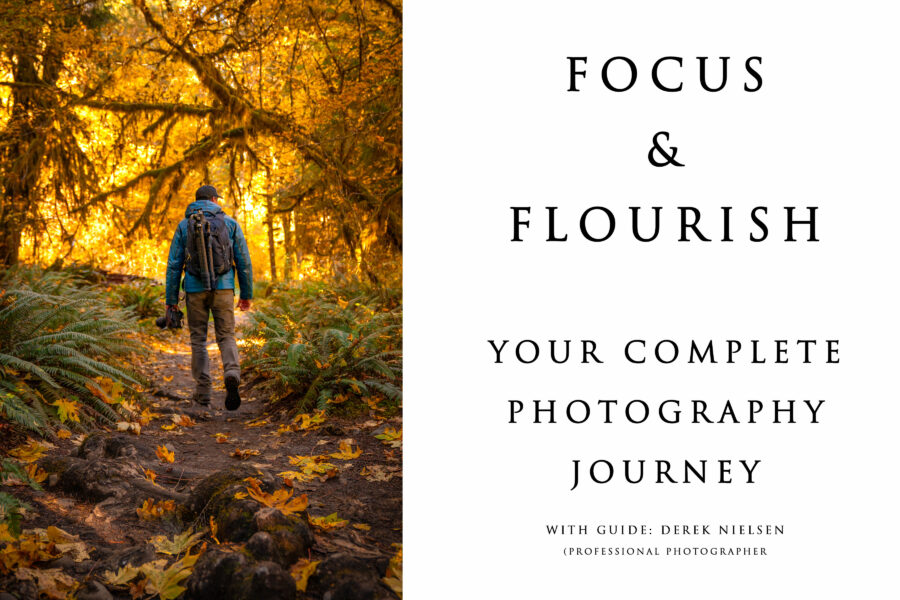
LEARN MORE
Imagine always wondering what would have happened if you had only invested in yourself and your passions. Think about how quickly life goes. Don’t wait for tomorrow to do the things you have been thinking about doing! Take the trip. Start that business. Invest in yourself. Without photography, I don’t know what my life would look like, but it would be a lot less inspiring. Don’t let another day go by without creating the life you truly want.
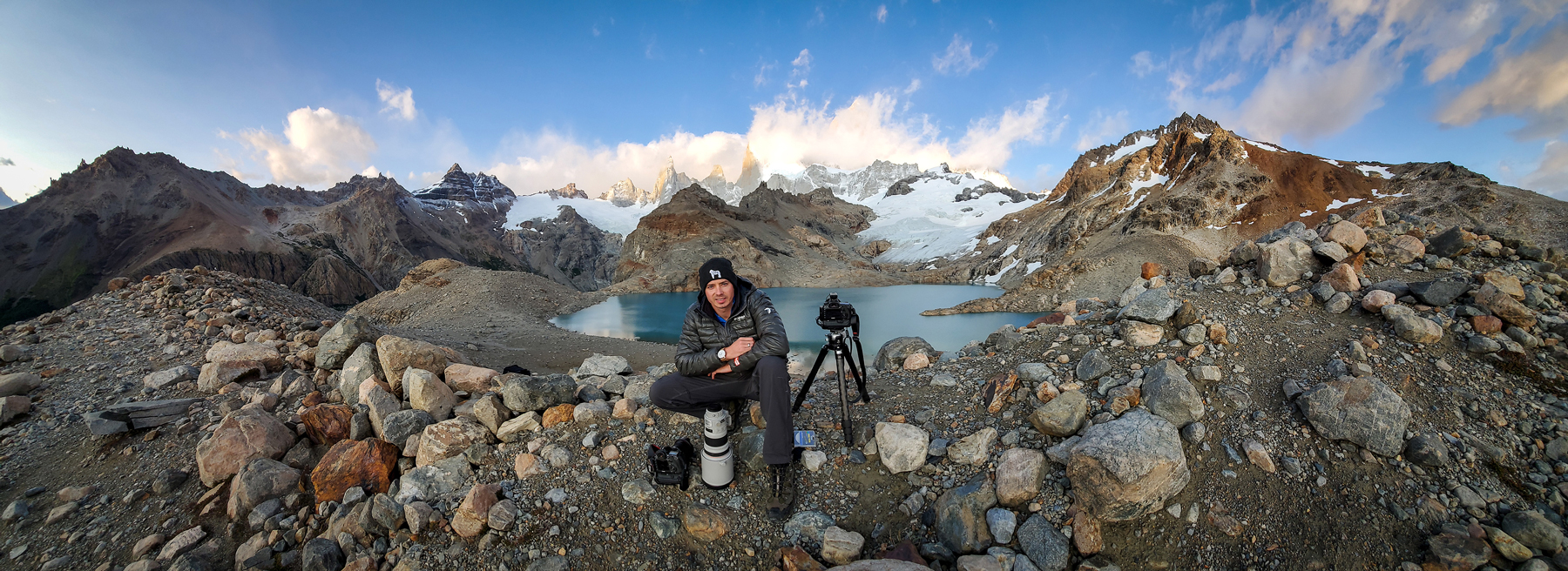
Hello! I'm Derek.
DEREK NIELSEN PHOTOGRAPHY RAISES AWARENESS ABOUT THE GLOBAL NEED FOR CONSERVATION THROUGH PHOTOGRAPHY AND DONATES UP TO 15% OF ALL SALES BACK TO ENVIRONMENTAL ORGANIZATIONS AROUND THE WORLD.
